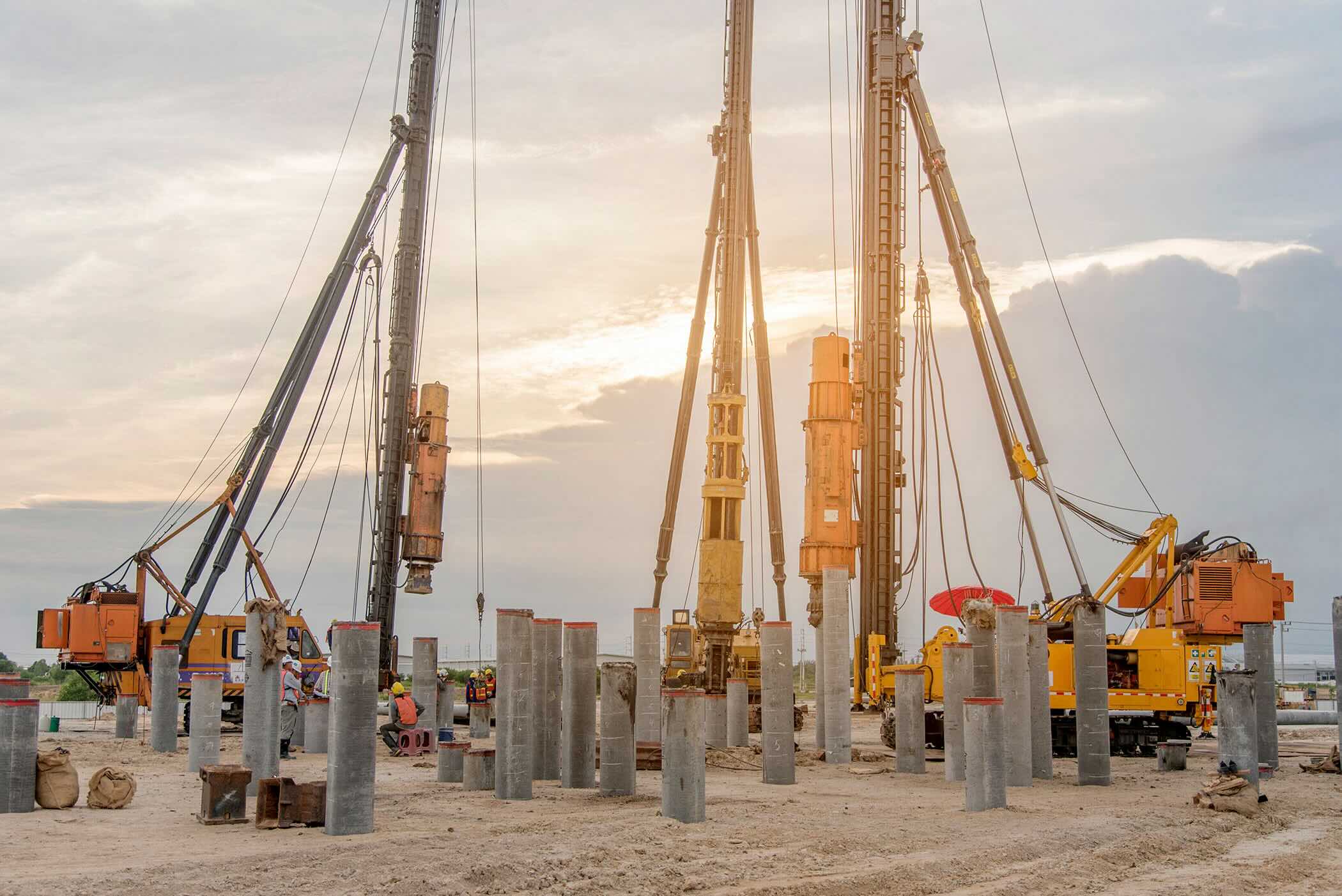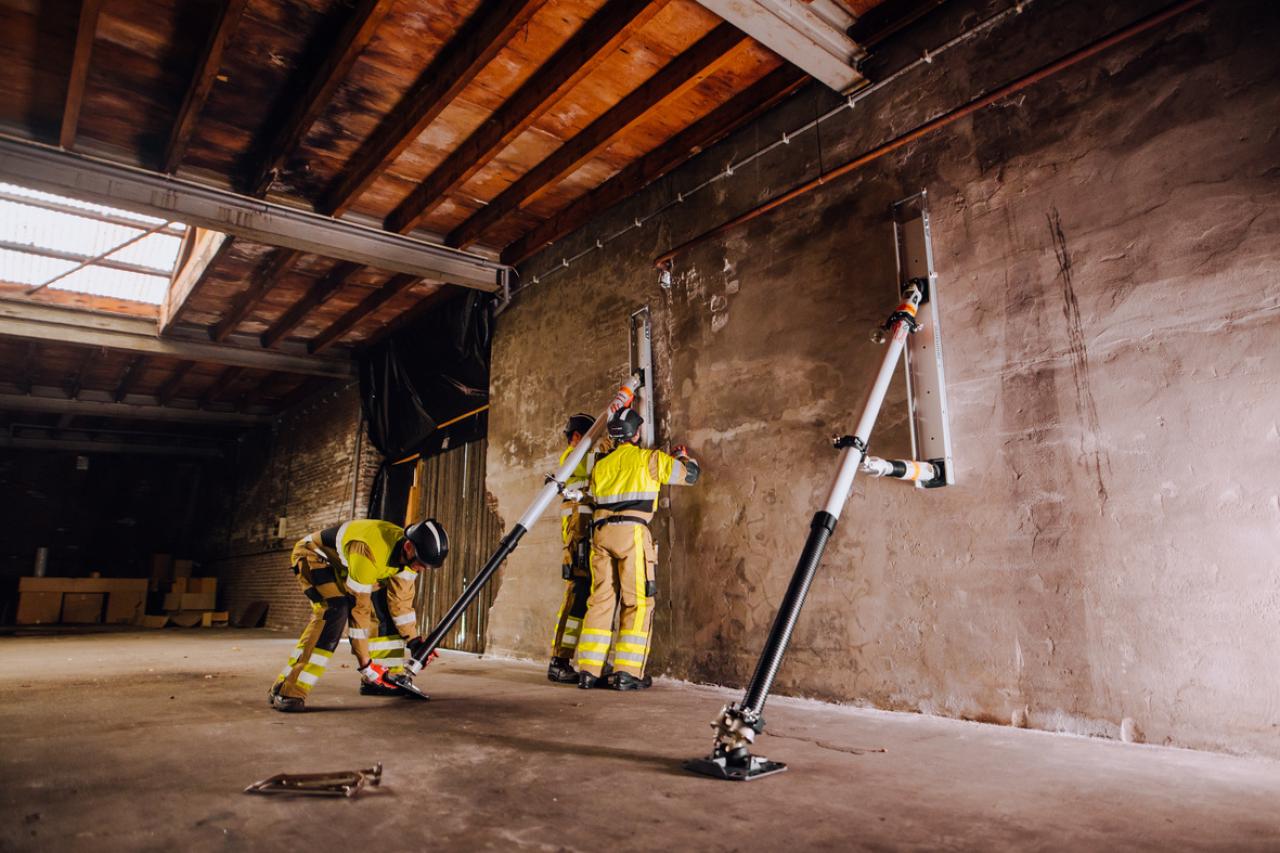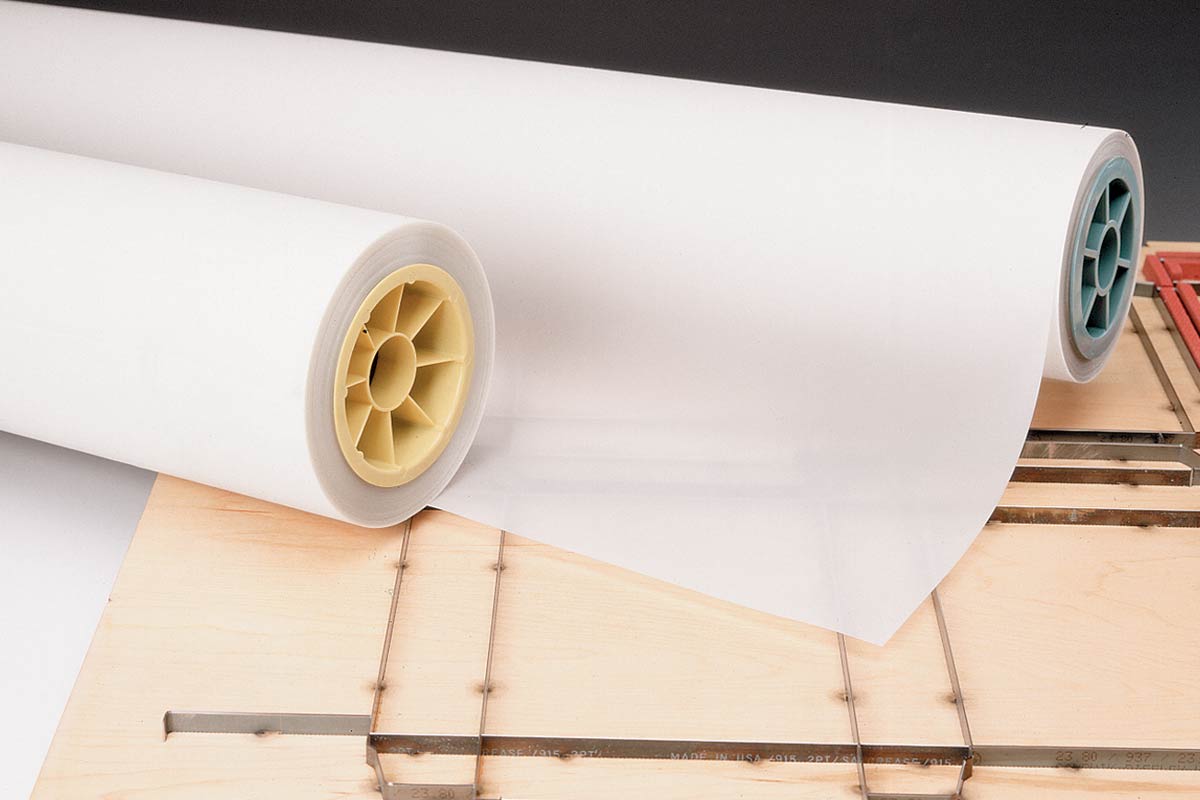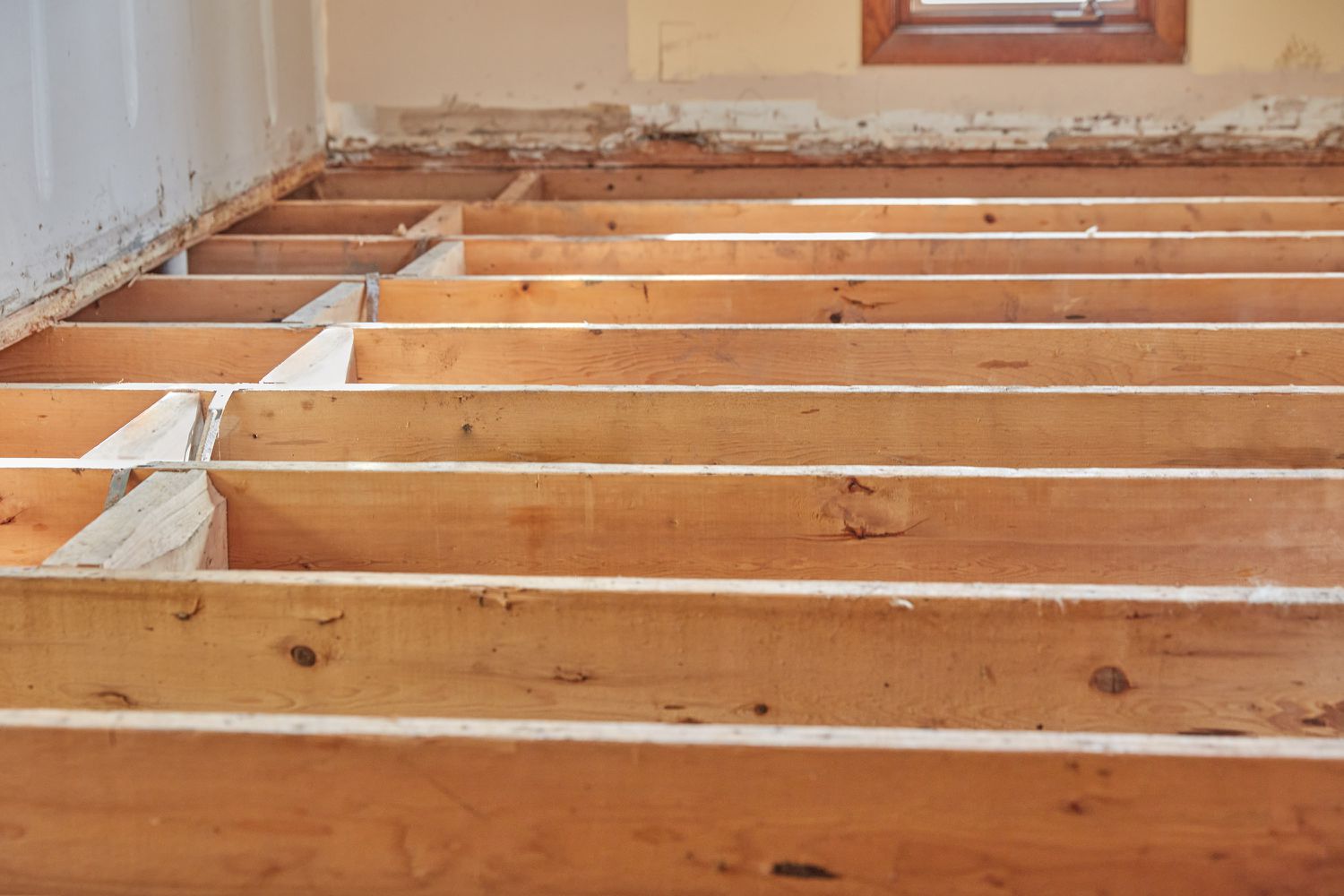Home>diy>Building & Construction>What Is A Pile Construction


Building & Construction
What Is A Pile Construction
Modified: January 9, 2024
Learn about the process of pile construction in building construction and how it contributes to the stability and integrity of structures. Gain insights into the techniques and importance of pile foundations.
(Many of the links in this article redirect to a specific reviewed product. Your purchase of these products through affiliate links helps to generate commission for Storables.com, at no extra cost. Learn more)
Introduction
In the world of construction, the stability and endurance of a structure are of vital importance. This is where pile construction comes into play. Pile construction is a widely-used technique for creating a solid foundation that can withstand the test of time. Whether it’s a high-rise building, a bridge, or a waterfront structure, piles provide the necessary support to ensure structural integrity.
So, what exactly is pile construction? In simple terms, pile construction involves the installation of long, slender structural members, called piles, into the ground. These piles serve as structural elements that transfer the load of the building or structure to a stable soil layer deep below the ground surface.
Pile construction is not a new concept; it has been employed for centuries by civilizations across the globe. However, with advancements in materials and construction techniques, pile construction has become a highly efficient and reliable method for creating strong foundations.
By distributing the weight of the structure over a larger area, piles reduce the risk of settlement and collapse caused by soil instability. Additionally, they can be used to compensate for poor soil conditions, such as soft or expansive soils, which lack the necessary load-bearing capacity. This makes pile construction a valuable technique in areas with challenging soil conditions.
To fully understand pile construction, it is important to explore the different types of piles, installation methods, factors influencing the process, and the advantages and disadvantages associated with this technique. Let’s delve further into the world of pile construction and unravel its significance in the field of building and construction.
Key Takeaways:
- Pile construction is a versatile and reliable foundation technique that provides stability and load-bearing capacity in challenging soil conditions, making it essential for high-rise buildings, bridges, waterfront structures, and industrial facilities.
- While offering high load-bearing capacity and environmental friendliness, pile construction also presents challenges such as complex design requirements, potential environmental impacts, and site constraints, requiring careful evaluation and expert consultation for successful implementation.
Read more: What Are Piles In Construction
Definition of Pile Construction
Pile construction is a foundation technique where long, slender structural elements, known as piles, are installed deep into the ground to provide support and stability to structures. These piles are typically made of materials such as concrete, wood, steel, or composite materials, depending on the specific requirements of the project.
The piles are driven or drilled into the ground until they reach a firm layer of soil or rock, known as the bearing stratum. This ensures that the structure or building is resting on a solid foundation, capable of withstanding the loads imposed on it.
Pile construction is used when the upper layers of soil are not strong enough to support the weight of a structure, or when the structure needs to be supported on variable soil conditions. By extending the foundation to a deeper, more stable layer, pile construction provides a strong and stable base for the structure.
There are various types of piles that can be used in pile construction, depending on factors such as the soil conditions, the load requirements, and the construction method. Common types of piles include driven piles, which are forcefully driven into the ground using heavy machinery, and bored piles, which are created by drilling a hole into the ground and then filling it with concrete or other materials.
Pile construction is a versatile technique that can be used in a wide range of applications, from residential buildings and commercial complexes to bridges, piers, and even offshore structures. The design and installation of piles require careful consideration of factors such as the soil composition, the expected loads, and the environmental conditions to ensure the stability and longevity of the structure.
Overall, pile construction plays a crucial role in the field of building and construction, providing a reliable and robust foundation solution for structures in various soil conditions. It enables the construction of safe and durable buildings, ensuring the long-term structural integrity of the built environment.
Types of Piles
There are several types of piles used in pile construction, each with its own unique characteristics and advantages. The choice of pile type depends on factors such as soil conditions, load requirements, and construction methods. Let’s explore some of the most common types of piles:
- Driven Piles: These are piles that are forcefully driven into the ground using equipment, such as hammers or vibratory drivers. Driven piles are typically made of materials like concrete, steel, or timber. They are a popular choice for their ease of installation and wide range of load-bearing capacities.
- Bored Piles: Bored piles, also known as drilled piles, are created by excavating a hole into the ground and then filling it with concrete or other suitable materials. Bored piles can be constructed using various methods, including rotary drilling, auger drilling, or underreaming. They are commonly used in areas with challenging soil conditions or when noise and vibration need to be minimized.
- Screw Piles: These piles have a helical shape and are screwed into the ground using specialized machinery. Screw piles provide excellent load-bearing capacity and can be used in various soil conditions, including sandy or silty soils. They are commonly used in foundation applications where rapid installation is required or where excavation is impractical.
- Sheet Piles: Sheet piles are typically made of steel and are used to create a retaining wall or a barrier to prevent soil or water movement. They are interlocked together to form a continuous wall and are often driven into the ground using vibratory or impact hammers. Sheet piles are commonly used in waterfront structures, tunnels, and underground structures.
- Composite Piles: Composite piles are a combination of different materials, such as concrete and steel, to take advantage of their individual strengths. For example, a composite pile may consist of a concrete shaft reinforced with steel bars. These piles offer enhanced durability, load-bearing capacity, and corrosion resistance, making them suitable for challenging environments.
These are just a few examples of the types of piles used in pile construction. Each type has its own advantages and limitations, and the selection depends on the specific requirements of the project. Consulting with a structural engineer or a geotechnical expert is crucial in determining the most suitable pile type for a particular construction project.
Pile Installation Methods
Pile installation methods vary depending on factors such as soil conditions, pile type, and project requirements. Here are some common methods used in the installation of piles:
- Driven Pile Installation: This method involves forcefully driving the piles into the ground using heavy machinery, such as hydraulic hammers or vibratory drivers. The piles are lifted and positioned over the designated location, and then the driving equipment applies downward force to insert the piles into the ground. The driving process continues until the required depth or resistance is achieved.
- Bored Pile Installation: Bored pile installation begins with the excavation of a hole in the ground using a drilling rig. The hole is typically larger than the diameter of the pile to accommodate the reinforcement bars and allow for concrete placement. After the hole is drilled, the reinforcement cage is inserted, and then the hole is filled with concrete or grout. The bored pile method allows for precise vertical alignment and can be used in a variety of soil conditions.
- Screw Pile Installation: Screw piles are installed using specialized machinery equipped with a rotating helical attachment. The pile is screwed into the ground by rotating it clockwise, similar to how a screw is driven into wood. The installation process is quick and efficient, and the rotational movement of the screw piles creates minimal soil disturbance. Screw pile installation is well-suited for projects requiring rapid installation or in areas with restricted access.
- Sheet Pile Installation: Sheet piles are installed by driving them into the ground using vibratory or impact hammers. The sheet piles are interlocked to create a continuous barrier, and as each pile is driven, it pushes against the previously installed one. This method is suitable for creating retaining walls, cofferdams, and other structures that require soil or water retention.
- Jetting: Jetting is a method used to assist in the installation of piles in cohesive soils or soils with high water content. Water jets are used to soften the soil, reducing resistance and facilitating the insertion of the pile into the ground. Jetting is often used in combination with other pile installation methods to overcome challenging soil conditions.
It is important to note that the choice of pile installation method depends on various factors such as soil conditions, project specifications, and site constraints. An experienced geotechnical engineer or pile contractor will determine the most suitable installation method based on a thorough understanding of the project requirements.
Factors Influencing Pile Construction
Pile construction is influenced by several factors that need to be considered during the planning and execution of a project. These factors play a crucial role in determining the type, size, and installation method of the piles. Here are some key factors influencing pile construction:
- Soil Conditions: The soil conditions at the construction site have a significant impact on the design and installation of piles. Factors such as soil type, density, bearing capacity, and groundwater level affect the choice of pile type and the depth at which the piles need to be installed.
- Load Requirements: The expected loads that the structure will impose on the piles influence the design and capacity of the piles. Factors such as the weight of the building, live loads, environmental loads, and seismic loads need to be considered to ensure that the piles can safely support the structure.
- Construction Method: The available construction method and equipment also influence pile construction. Factors such as accessibility, space constraints, and environmental restrictions may dictate the choice of pile installation method, such as driven piles, bored piles, screw piles, or sheet piles.
- Environmental Considerations: Environmental factors, such as groundwater conditions, proximity to bodies of water, and presence of corrosive substances, can affect pile construction. Special considerations may need to be taken to ensure the durability and longevity of the piles in such conditions.
- Structural Requirements: The structural requirements of the building or structure being supported by the piles play a crucial role in pile construction. Factors such as the number of storeys, type of construction, building codes, and design criteria influence the size, spacing, and arrangement of the piles.
- Cost and Time Constraints: Cost and time constraints are also crucial factors in pile construction. Factors such as project budget, construction schedule, and availability of resources can influence the choice of pile type, installation method, and project planning.
- Geotechnical Investigations: Prior to pile construction, detailed geotechnical investigations are conducted to assess soil conditions, determine soil properties, and understand the site-specific challenges. The findings of these investigations greatly influence the design and execution of pile construction.
By carefully considering these factors, engineers and construction professionals can develop a comprehensive plan for pile construction that ensures the stability, efficiency, and longevity of the structure.
When constructing a pile foundation, ensure that the soil conditions are thoroughly investigated to determine the appropriate type and length of piles needed for the specific project. This will help ensure the stability and longevity of the structure.
Read more: What Is A Pile Carpet
Advantages and Disadvantages of Pile Construction
Pile construction offers several advantages and disadvantages that need to be considered when deciding on the foundation method for a construction project. Understanding these pros and cons helps in making informed decisions. Let’s explore the advantages and disadvantages of pile construction:
Advantages:
- Load Bearing Capacity: Piles provide a high load-bearing capacity, allowing structures to be built on weak or variable soil conditions. By extending the foundation to deeper, more stable layers, pile construction ensures the structural stability and prevents settlement issues.
- Flexibility: Pile construction is versatile and can be adapted to different soil and site conditions. Various types of piles are available, and different installation methods can be employed based on the specific requirements of the project.
- Environmental Friendliness: Compared to other foundation methods like deep excavation, pile construction is considered more environmentally friendly. The minimal disturbance to the surrounding area, reduced excavation, and the use of sustainable materials make it a greener choice.
- Noise and Vibration Control: Pile construction methods, such as bored piles and screw piles, create less noise and vibration compared to other techniques. This is advantageous when working in urban areas or near sensitive structures.
- Time and Cost Efficiency: Pile construction can be a cost-effective and time-efficient solution in certain scenarios. Rapid installation methods like screw piles can help save time on construction schedules, while the adaptability of pile types can cater to different budgetary constraints.
Disadvantages:
- Site Constraints: Pile construction requires sufficient space and access for machinery and equipment. The presence of existing structures, narrow sites, or confined spaces can pose challenges to the installation of piles.
- Complex Design: Designing the pile foundation requires careful consideration of various factors, including soil conditions, load requirements, and structural design. Engaging a geotechnical engineer or structural engineer is crucial to ensure the proper design and installation of piles.
- Limited Reusability: In some cases, piles cannot be easily removed or reused once installed. This can be a disadvantage if there is a need to modify or demolish the structure in the future, as the piles may need to be cut off below the ground surface.
- Cost Variation: The cost of pile construction can vary depending on factors such as soil conditions, pile type, and site-specific factors. Unexpected soil conditions or the need for specialized equipment can lead to cost overruns.
- Environmental Considerations: Pile construction can have localized environmental impacts, particularly during pile driving activities. Sediment disturbance, noise, and vibration can potentially impact the surrounding ecosystem. Mitigation measures and proper planning are necessary to minimize these effects.
It is essential to weigh the advantages and disadvantages of pile construction against the specific requirements and constraints of each project. A thorough evaluation and expert consultation can help in making the most suitable choice for a solid foundation.
Common Applications of Pile Construction
Pile construction is a versatile foundation technique that finds application in various types of construction projects, providing stability and load-bearing capacity in challenging soil conditions. Here are some of the common applications of pile construction:
- High-Rise Buildings: Pile construction is widely used in the construction of high-rise buildings. The deep foundations created by piles ensure the stability and safety of tall structures, especially in urban areas where soil conditions may not be suitable for shallow foundations.
- Bridges and Flyovers: Pile foundations play a critical role in the construction of bridges, flyovers, and other transportation infrastructure. The piles provide the necessary support to bear the loads from the bridge deck and ensure the structural integrity of the entire structure.
- Waterfront Structures: Pile construction is extensively utilized in the construction of waterfront structures like piers, wharves, and jetties. Piles provide reliable support in marine environments, enabling the construction of structures that can withstand the forces of waves, tides, and currents.
- Industrial Facilities: Pile foundations are commonly used in the construction of industrial facilities, such as power plants, oil refineries, and chemical plants. These structures often require deep foundations due to the heavy machinery, equipment, and dynamic loads involved.
- Retaining Walls and Earthworks: Pile construction is employed in the construction of retaining walls, sheet pile walls, and earthworks. Piles help stabilize slopes, prevent soil movement, and retain the earth, making them crucial in highway construction, underground structures, and slope protection works.
- Offshore Structures: Pile construction is widely used in the construction of offshore structures such as oil platforms, wind turbine foundations, and subsea structures. These structures are subjected to harsh environmental conditions and require deep and reliable foundations to support their weight and resist lateral forces.
- Residential and Commercial Buildings: Pile construction is often employed in the construction of residential and commercial buildings, particularly in areas with weak or variable soil conditions. Piles provide a stable foundation, minimizing the risk of settlement and ensuring the long-term stability of the structures.
- Infrastructure Projects: Pile construction plays a crucial role in various infrastructure projects, including tunnels, underground structures, dams, and railways. Piles provide the needed strength and stability to withstand the loads and geological challenges associated with these types of projects.
These are just a few examples of the wide range of applications where pile construction is utilized. Regardless of the specific project, pile construction offers a reliable and robust foundation solution to support structures in challenging soil conditions and ensure their long-term stability.
Read more: What Is A Short Pile Carpet
Conclusion
Pile construction is a vital technique in the field of building and construction, offering a reliable and efficient way to create solid foundations. By installing piles deep into the ground, pile construction provides stability, load-bearing capacity, and resistance to settlement in various soil conditions.
Throughout this article, we have explored the definition of pile construction, the different types of piles, the methods used for pile installation, the factors influencing the process, and the advantages and disadvantages associated with this technique.
Pile construction offers numerous benefits, including high load-bearing capacity, flexibility in design and installation methods, and environmentally friendly approaches. It is well-suited for a wide range of applications, including high-rise buildings, bridges, waterfront structures, and industrial facilities. Whether in urban environments, challenging soil conditions, or marine environments, pile construction provides a stable and enduring foundation solution.
However, pile construction also has some limitations and considerations, including site constraints, complex design requirements, and potential environmental impacts. These factors need to be carefully evaluated and addressed during the planning and execution of pile construction projects.
In conclusion, pile construction is an essential technique that ensures the stability, durability, and safety of structures. By understanding the various aspects of pile construction and considering the specific requirements of each project, engineers and construction professionals can make informed decisions to provide a solid foundation for buildings, infrastructure, and other construction projects.
Frequently Asked Questions about What Is A Pile Construction
Was this page helpful?
At Storables.com, we guarantee accurate and reliable information. Our content, validated by Expert Board Contributors, is crafted following stringent Editorial Policies. We're committed to providing you with well-researched, expert-backed insights for all your informational needs.














0 thoughts on “What Is A Pile Construction”